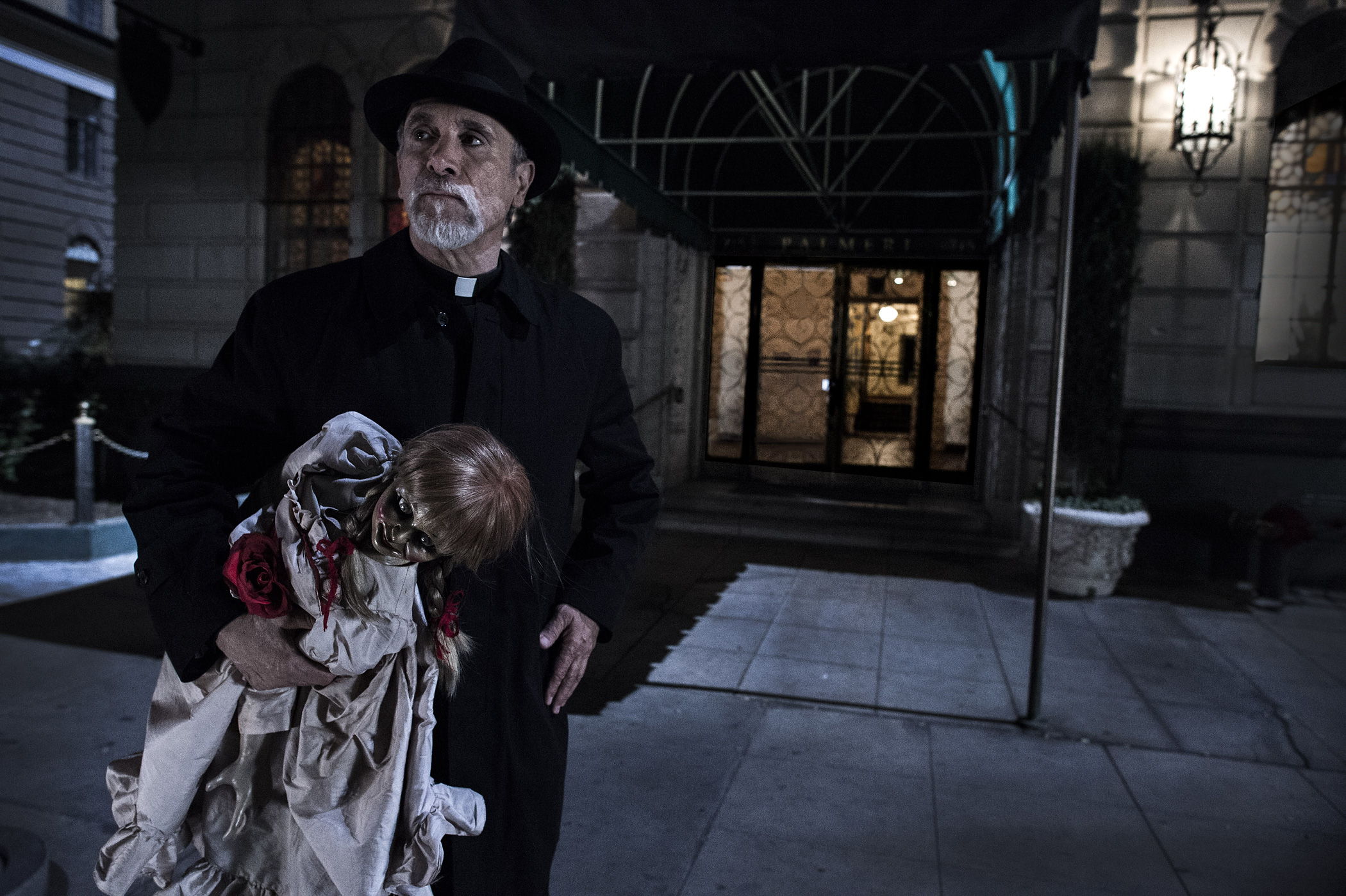
Nobody says the F word. There’s no nudity or spilled guts. Yet the Motion Picture Association of America has given Annabelle an R rating, “for intense sequences of disturbing violence and terror.” That’s not a warning — that’s a come-on. And yet, the horror-film genre may need it: none of the half-dozen fright-athons released so far this year has grossed as much as $20 million its first weekend or $35 million in its entire domestic run.
So Hollywood is banking on Annabelle, which has a pedigree of sorts, as a prequel to the 2013 hit The Conjuring. Based on the supposedly factual exploits of ghost-hunters Ed and Lorraine Warren, The Conjuring was one of last year’s biggest hits, dollar spent for dollar made: it earned $318 million worldwide on a budget of $20 million. Annabelle, which was produced for even less money ($6.5 million), and which promotes the earlier movie’s spooky doll to star status, is meant to scare up a few bucks until The Conjuring 2 materializes for Halloween 2015.
This one, directed by Conjuring cinematographer John R. Leonetti, is based on nothing truer than memories of Rosemary’s Baby, Roman Polanski’s 1968 horror classic about a young woman impregnated by Satan. To this template, screenwriter Gary Duberman added elements of the Charles Manson “Family,” a gang of Satanic cultists who in 1969 invaded the Benedict Canyon home of Polanski’s wife, Sharon Tate, then eight months pregnant with their child, and slaughtered her and four others.
World’s creepiest movie pitch: What if it’s 1969, and a pregnant blond, but not Sharon Tate, were to survive an attack from a Manson-type gang and give birth to a child, like the baby in the Polanski film, who was stalked by an avatar of the Devil? To make the connection clear, we’ll call the young woman Mia (for Mia Farrow, who played Rosemary) and her husband John (for John Cassavetes, as Rosemary’s spouse). We’ll also invoke the funeral-black baby carriage from the Rosemary’s Baby poster. But we also need a connection to The Conjuring, so we’ll work in the doll as the embodiment of teenaged Annabelle, the woman who stabbed Mia. And, as Mia, we’ll cast a pretty English actress named Annabelle (Wallis). Bases: covered.
The “real” Annabelle doll, which is locked away in the Warrens’ museum and blessed twice a month by a Catholic priest, was a regular Raggedy Ann. The movies’ Annabelle is an elaborate, enormous Victorian creature, about the size of a four-year-old, with gaping eyes, blood-red lips and, later, cracks in the skin. She’s no knife-wielding Chucky, from the Child’s Play series, or Richard Matheson’s great Zuni fetish doll from the 1975 TV movie Trilogy of Terror. Annabelle doesn’t speak and rarely moves. But she has modest telekinetic powers: she can make a chair rock, turn off a TV set, turn on a record player, all in aid of terrifying Mia while her doctor husband John (generically handsome Ward Horton) is away at work.
After the gang attack, the couple moves 30 miles from Santa Monica to Pasadena, yet still attends the same Catholic church to avail themselves of the sympathetic powers of Father Perez (Tony Amendola). Mia, who is oddly bereft of all companionship, strikes up a conversation with Evelyn (a slumming Alfre Woodard), who runs the local occult book store. When Mia says, “I think my family is being haunted by a ghost,” Evelyn calmly replies, “Aisle four.” Of course, Annabelle pops up in both cities. Within 15 mins., the audience is screaming en masse, “Throw out the damn doll!” (And not in your own trash can.) But John and Mia can’t do that. They’re in a horror movie.
Just because a film is a cheap ripoff doesn’t mean it can’t do the scare job. Leonetti occasionally avoids shock cuts to let Mia stand in the image’s foreground as the ghostly Annabelle-woman glides behind her. In one effective scene, Mia sees the Annabelle doll come to life as a four-year-old girl; as it bursts through the door of Mia’s room, it transforms into the adult Annabelle. Another nice sequence: Mia, pursued by a demon in her basement, rushes to the elevator and manages to close the doors; when the doors open, she’s in the same spooky basement.
Quality is often irrelevant in a horror movie; shock is the key. Like volunteers in the notorious Milgram experiments, who thought they were inflicting pain on other people, a movie audience wants to see how much terror they can handle by seeing people on the screen terrorized. I can’t watch; I must watch. With its familiar jolts in a genre that will never die, Annabelle isn’t a must-see. But if you do go, you must watch.
More Must-Reads From TIME
- The 100 Most Influential People of 2024
- Coco Gauff Is Playing for Herself Now
- Scenes From Pro-Palestinian Encampments Across U.S. Universities
- 6 Compliments That Land Every Time
- If You're Dating Right Now , You're Brave: Column
- The AI That Could Heal a Divided Internet
- Fallout Is a Brilliant Model for the Future of Video Game Adaptations
- Want Weekly Recs on What to Watch, Read, and More? Sign Up for Worth Your Time
Contact us at letters@time.com